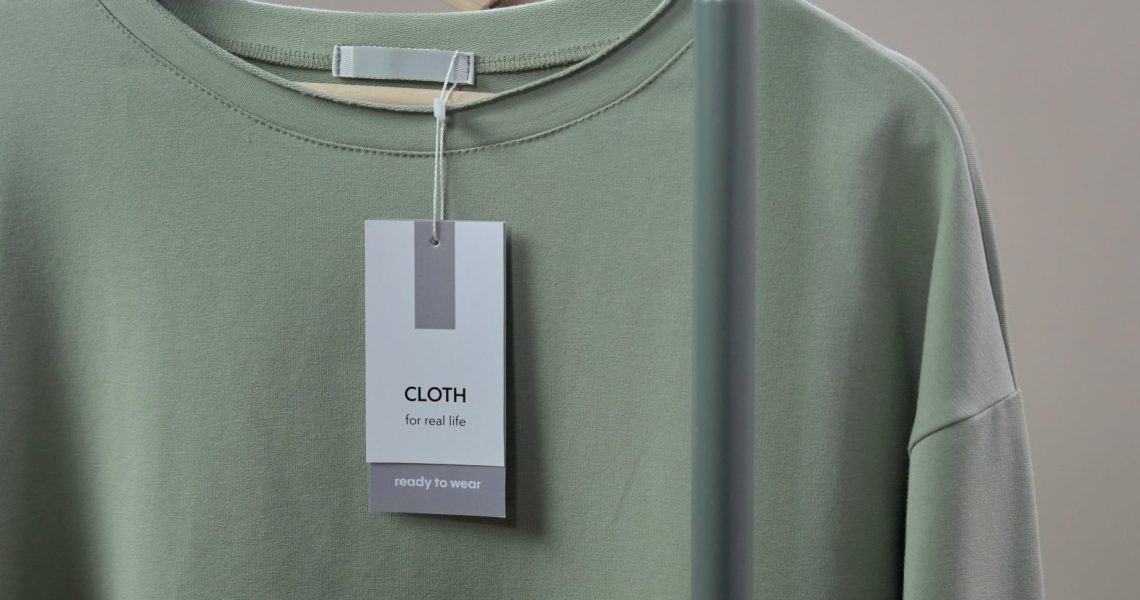Clothing identification is not just for the consumer — it also informs the end of life of a garment, making recycling easier. Thus, emerging technologies are set to create global change around the standardization of garment identification.
Garment labels are an essential component of clothing; the symbols used in the care labeling system were first introduced in 1963 and standardized labels came in at around the same time, as clothing started to be commercially made out of synthetic fibers. More than 50 years later, not much has changed. Clothing labels are not standardized by brands, when it comes to giving the consumer information about where garments came from and how to recycle them. But in the age of technology, how has the simple garment label not already been redesigned? Luckily, organizations and brands are now incorporating data to create the next generation of garment labels.
In a report conducted by Avery Dennison, a multinational label manufacturer, and the Global Web Index, an audience targeting company, the focus is on giving consumers information on garments.
“Data shows how receptive consumers are to initiatives that further the sustainable agenda. One trend we’ve tracked is that featuring the necessary information on tags [works to boost] product repairs, recycling, resale and rental exchange,” said Jason Mander, chief research officer at GWI. “As consumer interest in sustainable fashion practices continues, ID-level tools are helping to [fuel the] growing resale economy. Authentication is a key use case for digital [solutions], especially in the growing luxury resale market. Over 60% of fashion buyers want more transparency about the journey their clothes went on before making a purchase.”
This demand for transparency and traceability through garment labeling can be answered via technology. Avery Dennison is using QR technology in its Digital Care Label hangtags and garment labels to give better data to shoppers in different ways. This month, it partnered with lifestyle brand UpWest, and ReCircled, an apparel and footwear recycling and reuse-focused organization, to educate the consumer about the end of life of their product.
Many sustainability initiatives within the fashion industry focus on one aspect of the supply chain. However, pointing consumers to places where they can dispose of their clothes brings in circularity, or what many think is the future of the industry. Debbie Shakespeare, senior director of sustainability, compliance and core product line management at Avery Dennison, said, “We have structured the product to really think about [what motivates the consumer]. ‘What’s the trigger that the consumer engages with?’ Something that is very digital can tell a much broader overarching story of the product and the brand.”
Avery Dennison has also previously worked with science R&D company Ambercycle; it was the first partner for its digital care label that provides information on how to convert end-of-life textile “waste” into new yarns for apparel brands and manufacturers. The collaboration, carried out in May, shows the potential of the tags. They can improve visibility to the supply chain and the type of lifecycle data that’s useful when reselling and recycling. The latter can be difficult as garments come from different materials. The information on the tags is not just helpful for a product’s direct consumer; those that recycle or purchase it on resale can also easily identify what the garment is made of after the original owner has disposed of it.
Ad position: web_incontent_pos1
The E.U. has been looking to standardize garment labels since 2013. Its proposed Product Environmental Footprinting (PEF) project is expected to become the most influential consumer-facing reporting system for environmental credentials. However, the provided information will be based on the faulty Higg Index, which ranks polyester and nylon higher than natural fibers like wool and silk.
The PEF project is crucial for determining the future of how E.U.consumers will be guided toward making more sustainable choices. Harriet Vocking, chief brand officer at Eco Age, an agency for sustainable business strategy, is leading the “Make the Label Count” campaign that is looking to change the way that the E.U. creates the PEF certification. She said, “The Higg Index is not equal in its life cycle assessments. For natural fibers, they take into consideration farming methods from the cradle all the way through to the factory gate. But for plastics, it merely factors [the stages] from the barrel of oil to production.” The Index does not take into account how the end of life of natural fiber garments is infinitely better; clothing made from natural materials can be recycled and reused, while plastic-based fibers micro-shed and cannot be recycled further.
This means that, while garment labels can be a way of integrating data into the garments that consumers can access, getting the data right needs to be a priority.




